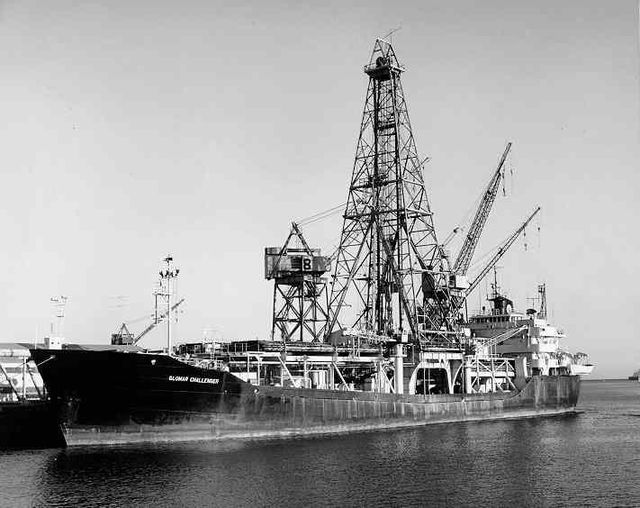International Ocean Discovery Program
The International Ocean Discovery Program (IODP) is an international marine research collaboration dedicated to advancing scientific understanding of the Earth through drilling, coring, and monitoring the subseafloor. The research enabled by IODP samples and data improves scientific understanding of changing climate and ocean conditions, the origins of ancient life, risks posed by geohazards, and the structure and processes of Earth's tectonic plates and uppermost mantle. IODP began in 2013 and builds on the research of four previous scientific ocean drilling programs: Project Mohole, Deep Sea Drilling Project, Ocean Drilling Program, and Integrated Ocean Drilling Program. Together, these programs represent the longest running and most successful international Earth science collaboration.
JOIDES Resolution docked in Panama, October 2012
Project Mohole was an attempt in the early 1960s to drill through the Earth's crust to obtain samples of the Mohorovičić discontinuity, or Moho, the boundary between the Earth's crust and mantle. The project was intended to provide an earth science complement to the high-profile Space Race. While such a project was not feasible on land, drilling in the open ocean was more feasible, because the mantle lies much closer to the sea floor.
Dr. Gordon Lill, Deputy Director of the National Ocean Survey, and head of the American Miscellaneous Society, the founding group of the Deep Sea Drilling Project
A model of the proposed Mohole drilling platform designed by Brown&Root.
The Glomar Challenger, launched in 1968, was the drill ship for NSF's Deep Sea Drilling Project.




